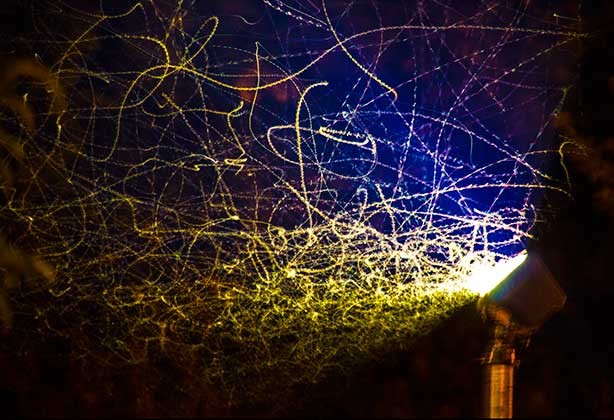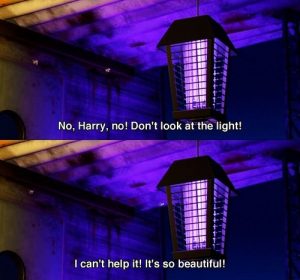By Rachel Dodgen
Having grown up in South Carolina, I am no stranger to bugs. Mosquitos seemed to be a problem year-round and don’t even get me started on Palmetto Bugs (a.k.a. ginormous cockroaches). Other bugs, though, I couldn’t get enough of, like lightning bugs illuminating our backyard in the evenings and the garden spiders spinning intricate webs just off our back porch. Though insects may be the least favorite and least appreciated in the animal kingdom, they play a crucial role in our ecosystem. Most are at the bottom of complex food webs, many are decomposers, and several species have symbiotic relationships with plants and other animals (pollinators anyone?). The collapse of the insect population would mean the collapse of life as we know it, and unfortunately, it is already happening.
The world’s insect species are hurtling down the path to extinction with more than 40% in decline and a third endangered. Some data even suggests that insects could vanish within a century! A recent study in Puerto Rico showed a 98% fall in ground insects over the past 35 years and another showed a 58% decline in butterfly species in England from 2000 to 2009. The once numerous honeybee colonies in the US that numbered six million has fallen to less than three million. This is a global issue. While the first thought may be that pesticides, climate change, and land use changes are to blame, new research shows another pollutant is at significant fault – light.
Anyone recognize this scene from Disney Pixar’s A Bug’s Life? If you don’t recall, it doesn’t go so well for Harry. While the animators included this for some laughs there is more truth in this scene than they likely intended. Many insects are positively phototactic, (how an organism responds to light with motion) meaning they actively move towards lights (like moths), while others are negatively phototactic meaning they actively avoid light (like cockroaches). While the exact reason for this behavior is up for debate, the dominating theory is that insects use light as a navigational guide keeping either the sun or moon at a constant angle. Since artificial light reflects light in all directions insects become confused and constantly circle trying to maintain that angle. Another theory is that some insects mistake the light for a flower since both reflect ultraviolet light and fly towards the light in hopes for food.
Artificial light at night not only draws insects in, it also affects mating patterns, juvenile development, breeding patterns, and their ability to find food. Predators like toads, bats, and spiders now set up camp near lights for a feeding frenzy. It is estimated that a third of insects drawn to a particular light source will either die from exhaustion or predation. Artificial light disrupts the mating signals of fireflies. Nocturnal insects that avoid light are now limited in their area to search for food with one-third of the globe illuminated at night. Bees aren’t getting enough sleep to recover from their busy day visiting up to 100 flowers. Water-breeding insects now mistake lit asphalt for moonlit water and lay their eggs in a parking lot or on a road causing immediate elimination of a population. The list goes on and on…
Other threats insects may be able to adapt to like building resistance to pesticides and migrating to new environments as the climate warms. Artificial light interrupts the predictable day-night cycle that has existed since the beginning of life. It is encoded in every living being’s DNA, including humans, making it near impossible for insects to adapt to the bombardment of light at night. But luckily, unlike the complexity of cleaning pesticides or slowing climate change, light pollution is the easiest to resolve. Remove the light and the threat is eliminated – easy peasy lemon squeezy.
At the start of my service with the Dark Sky project in Yellowstone National Park, I really only considered reduced energy use and being able to truly see the cosmos as the benefits of implementing these standards. I never considered how turning off unnecessary lights, using LED bulbs on the yellow color spectrum as opposed to blue, and using timers or motion sensors could help save pollinators, decomposers, keystone species, my favorite lightning bugs, and even those pesky Palmetto Bugs (as much as we would like for them to disappear). It is the easiest and simplest solution to help end a global collapse of a critical part of our ecosystem. So, as I’ve said before and I’ll say it again (maybe even in my next blog as well), just flip the switch!
P.S. I am still loving the winter wonderland I get to call home and am still amazed that this is my life right now. Since my last post, I have snowmobiled for the first time as part of my service, become one with a bison herd (while also maintaining the appropriate distance), watched the 8 Mile wolf pack enjoy their lunch and listened to them howl, finally saw an elusive moose chilling in the snow, and watched male big horn sheep fight for dominance (herd pictured below with bonus white-tailed deer). Yellowstone has stolen my heart.










